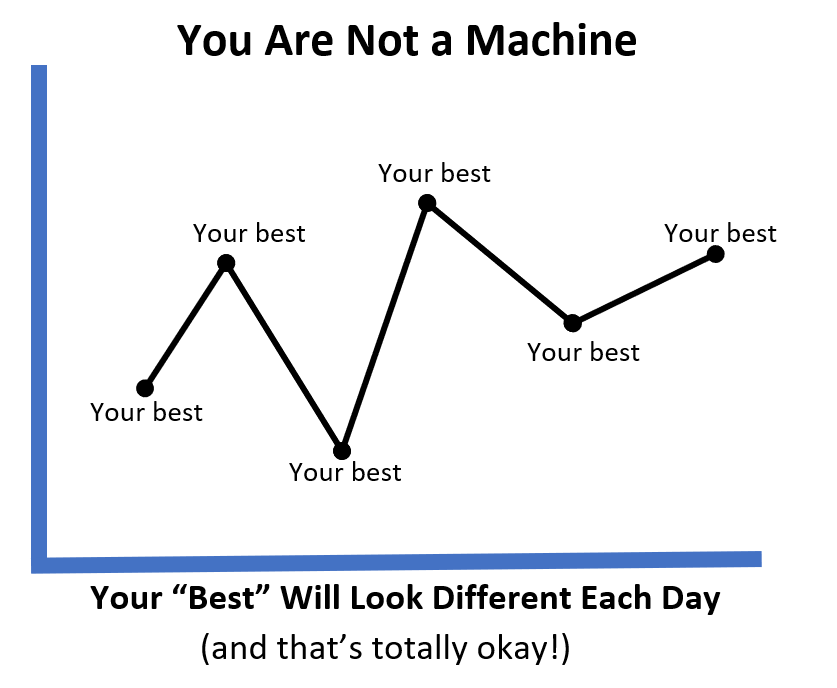

.
This week we have a guest post from Stephanie Thompson who is the principal of Beach Haven School in sunny Auckland New Zealand. Stephanie has a wealth of leadership experience in many educational settings and graciously agreed to share some thinking about life in the swivelly chair.
I found the above meme when I was doing one of those mindless scrolling sessions one does when one has a few minutes to check their Facebook feed. It gave me pause for thought, and it resonated. It resonated hard.
Here in the beautiful Aotearoa, we are heading back into our third term after a two week ‘non contact’ (code for holiday) break. Term Two found itself to be long (ridiculous when you know that logically, it was a standard issue term, no longer than any other), a little fractious, and most certainly, tiring. Initially I thought it was just me, but after numerous conversations with colleagues, it appears I am not alone! The need for some down time, to refresh and to recharge, was most welcome.
The discovery of this meme was timely.
It arrived at a time where leaders, myself included, felt like one of those hamsters on a treadmill – going flat out, but not feeling like you were getting anywhere. It served as a gentle reminder to take pause and consider this notion of ‘best’. It speaks to the very essence of leadership, and our need to ‘do our best’ and run flat out on that treadmill at an unsustainable pace. More often than not, what we consider to be ‘our best’ is set at such a high level of self imposed expectation, that is, in reality, hard (if not impossible) to achieve at the same level, every day.
The thing about driving the leadership swivelly chair is that it is not predictable, or static. No two days are the same, and our context can change quickly and often without warning. What looks like our version of ‘best’ today could look quite different tomorrow, because the conditions will not be the same. The variables you are working with today are unlikely to be the same tomorrow.
For me, this means the best leadership mode I can employ to navigate the unpredictable is to be agile. An agile leader is one who is adaptable, thinks strategically, works from a place of resilience and can quickly move across the shifting sands of context in a consistent, dynamic way. Perhaps, this requires us to think about the expectation we place on ourselves in regards to what we think ‘best’ is.
As an agile leader, maybe we need to readjust and adapt this understanding of ‘best’ to better meet the challenges of the day, rather than try to adhere to a ‘one size of best, fits all’ expectation. If we refocus our mindset from this agile perspective, then we can recognize and understand that it is ok for our best to look different each day.
This new understanding gives me hope, and helps take the pressure off of my own self-imposed expectations. The biggest lesson for me is that it is time to be kinder to self! Time to tell the nagging voice in my head to quiet, and to rejoice in the day-to-day achievements, big and small – irrespective of which level of ‘best’ they are at.
It is important to remember that we are not a machine. We are sentient beings, capable of operating at multiple levels of ‘best’!
I couldn’t help but wonder about my own leadership expectations around ‘doing my best’. I know I set high expectations for myself and for others, and it gave me pause to consider if those expectations are realistic for every context and situation I face.
I put myself into the role of coachee and I imagined what questions I would ask of myself, if I was self coaching.
- Are my expectations realistic and fit for purpose?
- Are they helpful or harmful and can you tell the difference?
- What does your internal dialogue say? Are you thinking in the present (what can I do, what will I do) or are you thinking more in the future (what should I be doing) or are you thinking in the past (what should I have done)?
- Which thought process, the past, the future or the present, helps you with the context you are currently facing? Which are unhelpful and why?
- What small wins did you make in this situation and how might you celebrate them?
- Am I playing to my strengths?
- I am I being respectful of the amount of time I need to accomplish something? What does that look like?
- Am I protecting, and valuing MY time , so that I can be a more present family member, friend, leader? (this is my favourite)
As we move into the second half of the year, I would urge you all to consider the expectations you place on yourself. To remember that it is perfectly ok for your ‘best’ to look different, to be agile in an ever changing landscape, and finally, that reframing how you see your ‘best’ is about looking after you!
You are worth it, and you are not a machine!
Stephanie
If you have any feedback for Stephanie, you can leave a comment below, or head over to the 40HP Facebook page. And as always, by adding your email address below our weekly posts will be sent directly to you.